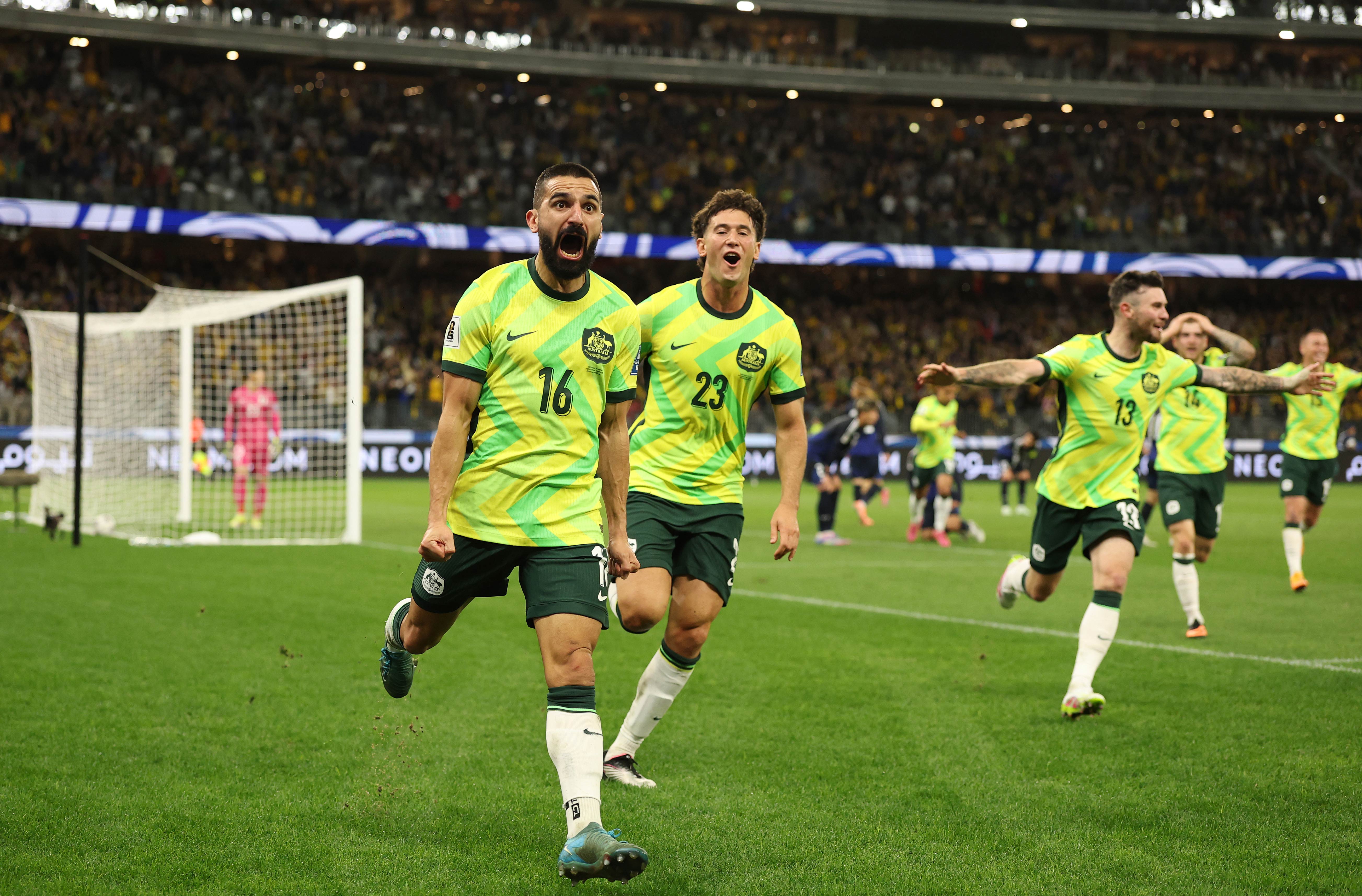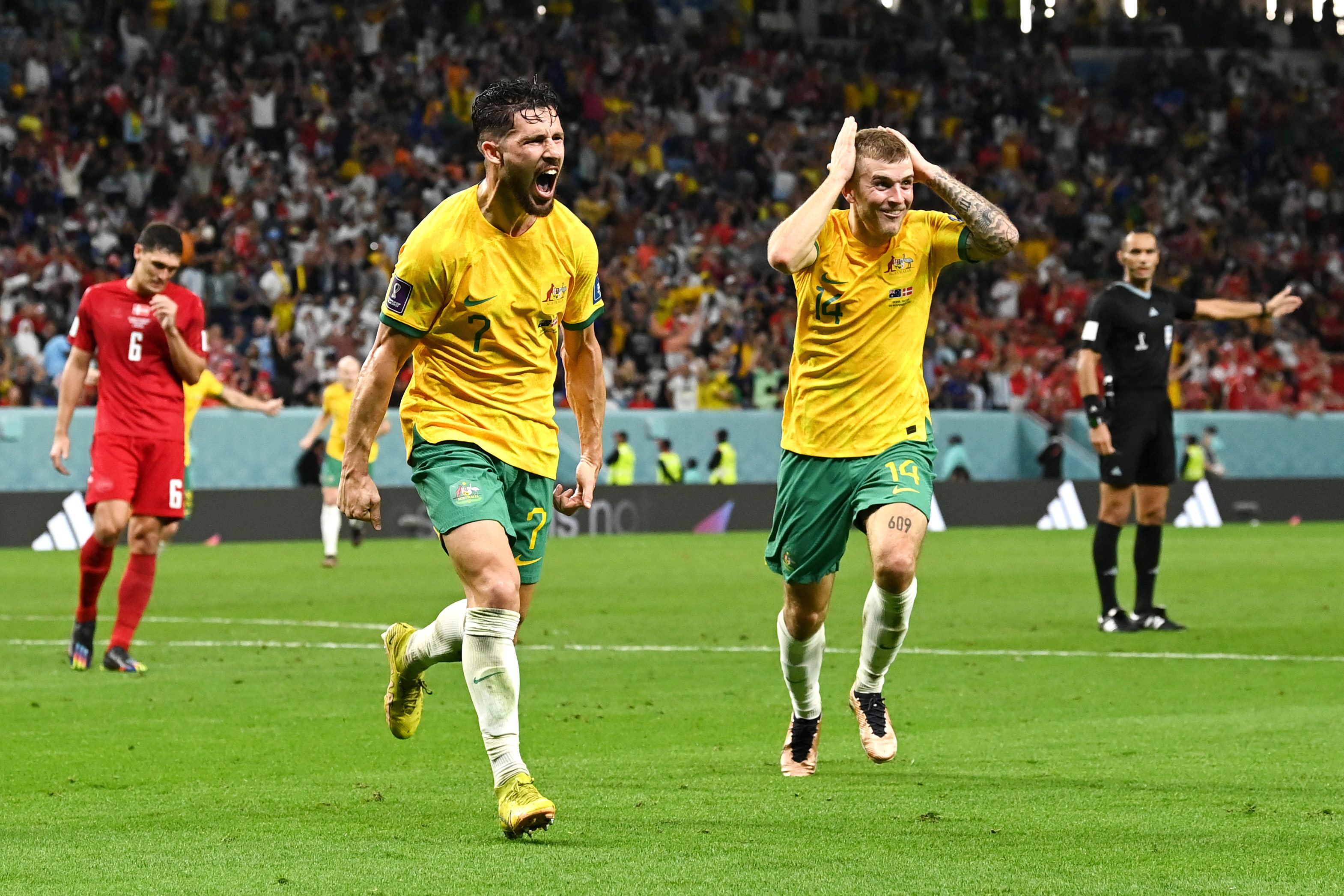You’re probably familiar with some of the lyrics to ‘Dem Bones’ – even if you had no idea that they’re derived from that song first performed by The Famous Myers Jubilee Singers all the way back in 1928. ‘Toe bone connected to the foot bone; Foot bone connected to the heel bone; Heel bone connected to the ankle bone; Ankle bone connected to the leg bone’ and so on.
Or ‘The something's connected to the... red thing. The red thing's connected to my wrist watch’ if you're performing the Dr Nick Riviera version. The tune was originally penned as a spiritual bop nearly a century ago, but these days is more recognised as a children’s rhyme, introducing younger generations to the interconnected nature of the human body. Which, in a roundabout way, brings us to CommBank Socceroos attacking midfielder Riley McGree.

One of Australia's most potent attacking weapons, the 27-year-old presented as a remarkable fit for the inverted winger role that is frequently seen in Tony Popovic’s system when the new head coach arrived; coming off the bench in the new gaffer’s first game before starting the next three. But, as has so often, maddeningly, been the case for the South Australian, injuries waylaid his momentum – forcing him to miss the Socceroos' next two wins over Indonesia and China.
He was able to return in time for the final, defining window of qualification and stood up to be counted: providing the famous assist for Aziz Behich’s famous winner against Japan and coming on to help see out the subsequent win over Saudi Arabia that secured qualification. But much to his, and Australian and Middlesbrough supporters’, chagrin, injuries once again struck, ruling him out of the opening months of the Championship campaign and Australia’s games against New Zealand, Canada, and the United States.
After being sent to see several specialists in an attempt to nail down his issues, McGree was eventually directed to a doctor in Dublin by Boro, who devised a plan to get back on the pitch and, hopefully, stay there. And as he was told: everything’s connected.
“There was a funny correlation between... the specialist sees a lot of crossover from the opposite ankle to the affected hamstring,” McGree explained.
“My right hamstring was the affected one, and my left foot and ankle have been the ones where I've had my plantar fascia issues and all that kind of thing.
“He sees it a lot. So it was a matter of strengthening up that calf, that ankle to then create an even plane when I run, change direction, etc. So we got there in the end.”
The main malady affecting McGree was an injury to what’s known as the hamstring’s T-junction, where the long and short heads of the biceps femoris muscle meet to create a T shape. It’s particularly vulnerable to tearing but also rather difficult to treat, given that it can often settle into an asymptomatic state very quickly. For more complex issues, such as McGree’s, it requires a special, targeted approach to treatment. And in Dublin, that’s what he got.
“The original injury that I did in my hamstring; it's called a T-junction injury,” said McGree.
“And it probably ended up being a bit worse than what we thought it was. And then I never really strengthened it to the extent it needed to be strengthened. And then the little setbacks kept happening. On the same hamstring, I kept getting small injuries above the initial injury site.
“We ended up going to a specialist at a club in Dublin, and he basically said to take a three-week block to strengthen up in the gym. Do loads of strength work. Keep a cap on the running, etc. Get it right. Strengthen it up. Give it the best opportunity to stand the exertion that I do on a pitch: high-speed meters and all that kind of stuff. To focus on the strength stuff.
“It's a combination of isometric holds, purely strength targeting the T-junction area of the hamstring. And then it was also around my glutes that stabilised everything.
"And since then, touch wood, everything's been quite good. It was just a matter of getting the area stronger and the scar tissue that was from the original injury stronger so it could cope with the physical output that I do in my game.”
Inevitably, during his long time on the sidelines, McGree has had a lot of time to reflect and think – a routine part of the isolation that comes with spending long days in the treatment room and the gym rather than being out there on the park with your teammates. He’s also come in for some level of stick from Boro supporters during his time on the sidelines, bemoaning his lack of availability at a time when hopes of promotion to the Premier League are growing on the Riverside.
But these challenges have also given rise to a new level of perspective from McGree, with the midfielder telling ESPN in June that he was now focusing on “what I could control. If I did my best today and it didn't go my way, then I can put my head on the pillow knowing I gave my best and it just wasn't meant to be that day."

But remaining resolute during rehabilitation is just one of the areas that McGree has developed over the past year. With the trepidation that comes with a return, and the fears of re-aggravation and another stint on the sidelines, a familiar one to any player coming back from a chronic injury.
“Any other time if I've had a hamstring injury, or an injury in general, I think I've been okay and fine with attacking a sprint or attacking an action,” he explained.
“But because that was the mechanism where I did it, and all these little setbacks I've had, it's hard to trust your body again.
“And a lot of people from the outside might not understand it, but it is. It's not as easy as it seems, going on the training pitch every day and just getting the best physio work and the best this, and the best that, it's a mental battle more than anything, I think.
“Personally, you've got to learn to trust your body again. And I'm still probably getting there, to be honest, and there are still little bits and bobs that I feel tiredness or stiffness here and there. You kind of question what that might be, but I think it's a daily process, and something that, over time, gradually will improve.”
After making his first start for Boro in their final game before the international break, McGree’s recovery took another major step last Friday when he played his first minutes for the Socceroos since that win over the Saudis back in June: coming on as a second-half substitute and, despite the overall tough night for the side, providing some level of spark in the attack.
Now in New York, ready for the Socceroos' second game of the window against Colombia, the Gawler-native, alongside another returning veteran in Jackson Irvine, will likely be in the frame to play more minutes at Citi Field, albeit in a manner that will be carefully managed by the team’s coaching and sports science staff.
But with a World Cup looming and sitting in one of the Championship’s two automatic promotion slots 15 weeks into its campaign, McGree is very aware of the importance of staying on the park and performing well.

“Before this season, I looked at it and I told the people around me, and I told myself, that this is probably the biggest season in my career to date,” he said.
“Every season is my biggest season to date. But this one, especially.
“I’m with a really ambitious club in a good position and with potential to be in the Premier League at the end of the season. And then hopefully I can go to a World Cup.
“And I'm getting a little bit older now. I'm 27, so I'm a bit more experienced, and there's a bit of an expectation, potentially, from the players around me, the coaching staff and the fans for me to do well. I think I relish that expectation and the pressure that comes with it, because it is a privilege, pressure is a privilege.
“So this year is important and I hope to take full advantage of the opportunities that I get.”
